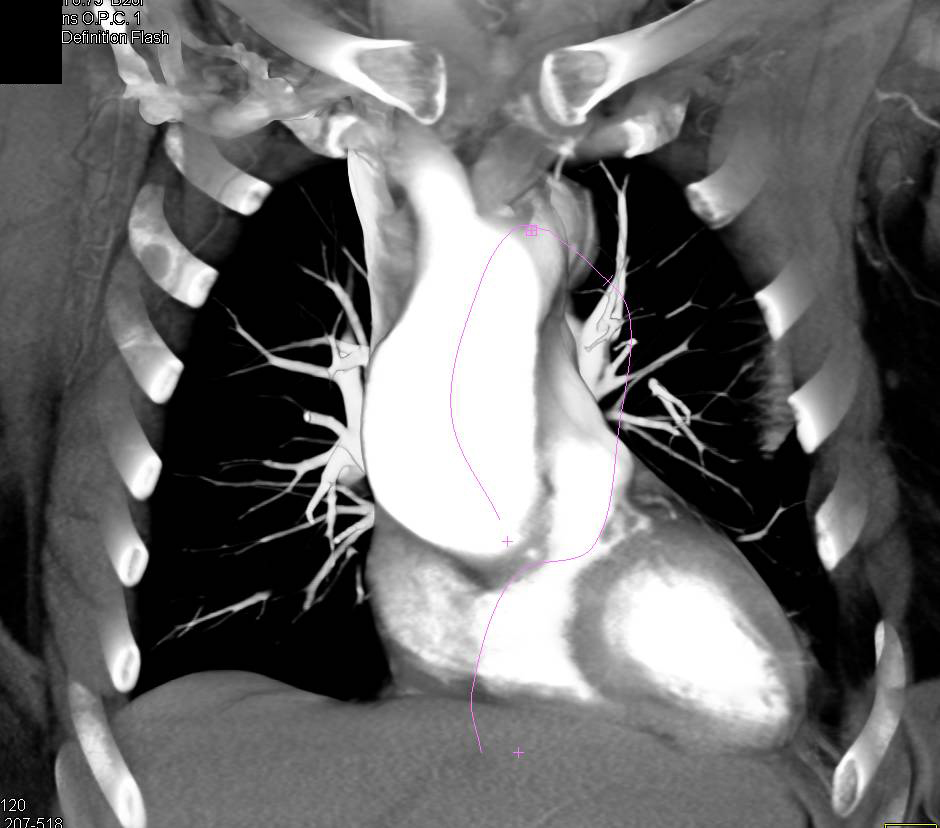

Surgical repair is usually done with resection of the narrowed piece and end-to-end reconnection. Or a portion of an artery may be used as a flap to expand the area (called a subclavian flap aortoplasty).īecause older children may have minimal symptoms, coarctation repair is typically planned electively.

In another method, the narrowing may be opened with a patch. Sometimes the resection (removal) must be extended towards the arch if there is a longer piece of narrowing. The most common repair involves resection (removal) of the narrowed area with anastomosis (reconnection) of the two ends to each other. There are a few surgical techniques to repair coarctation. If the baby has symptoms of a coarctation, surgery is done on an urgent basis. Many babies need to be placed on a ventilator before surgery. Often other intravenous (IV) medicines may also be needed to help the heart. This allows blood flow to the body beyond the coarctation. A continuous intravenous medication, prostaglandin (PGE-1), is used to open the ductus arteriosus. In a critically ill newborn, the goals are to improve ventricular function and restore blood flow to the lower body. Occasionally other tests, such as a cardiac MRI or CT scan, may be used to look at the coarctation. It can also evaluate for other cardiac anomalies that may be present. This can look at the anatomy of the aorta. The diagnosis of coarctation is confirmed with echocardiography. High blood pressure in the arms (but not the legs) may be noticed. In these older patients, coarctation is often first thought of because of a heart murmur or high blood pressure.Ĭoarctation is considered when the doctor is unable to feel pulses in a child’s legs. In patients who do not develop heart failure as newborns, coarctation may not be found until the child is several years old. Because these newborns are well until the ductus arteriosus closes, symptoms appear quickly. This can lead to heart failure and shock. When the ductus arteriosus closes, the left ventricle must suddenly pump against much higher resistance. In about 25 percent of cases of isolated coarctation, the narrowing is severe enough to cause symptoms in the first days of life. The age at which coarctation is found depends on the severity of the narrowing. Diagnosis of CoarctationĬoarctation of the aorta is present from birth. Or not enough blood flow to the organs of the body. If the narrowing is very severe, the ventricle may not be strong enough to do this extra work. When a coarctation exists, the left ventricle must work harder to create a higher pressure than normal to force blood through the narrow part of the aorta to the lower part of the body. Coarctation may also be seen as a part of more complex,Ĭoarctation of the aorta is common in some patients with genetic disorders, such as Turner's syndrome. The defects usually seen with coarctation are bicuspid aortic valve and Coarctation may also occur with other cardiac defects, typically involving the left side of the heart. In babies with coarctation, the aortic arch may also be small (hypoplastic). Coarctation may be caused by having extra ductal tissue. It has special tissue in its wall that causes it to close in the first hours or days of life. The ductus arteriosus is a blood vessel that is normally present in a fetus. This portion of the aorta is called the "juxtaductal" aorta. The aorta is the main blood vessel carrying oxygen-rich blood from the left ventricle of the heart to all the organs of the body.Ĭoarctation occurs most often in a short piece of the aorta just beyond where the arteries to the head and arms take off. Coarctation of the aorta is a narrowing of the aorta.


 0 kommentar(er)
0 kommentar(er)
